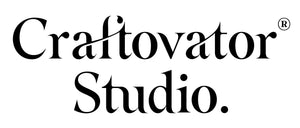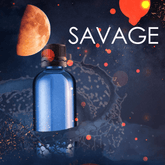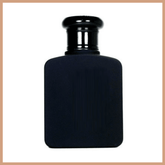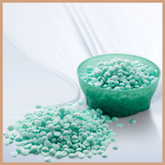How to Conduct a Burn Test on Your Candles (with free downloadable test sheet!)
Our candle burn testing guide will help you understand why we need to conduct burn tests, what’s involved in conducting a burn test and we’ll also explain how our downloadable candle burn test sheet works so you can easily fill this in whilst you’re in the candle testing phase of candle making.

Before you start to think about selling your candle creations, you will need to ensure you have tested them thoroughly. Testing candles is simply trialling the products yourself, burning them to see how they perform. When you’ve done this testing and everything has gone to plan (albeit after a few tweaks here and there!), you can of course start to advertise your candles.
Click Here to Download and Print your FREE Candle Burn Test Sheets!
What is a candle burn test?
A candle burn test is made up of many different tests that overall, ensures the candle you’ve made is burning correctly, safely and of course, smells great.
The different tests that make up the entirety of a candle burn test are as follows:
Burn Tests
This measures how the candle is performing whilst lit and covers a 3-4 hourly burn duration each burn test. Other burn test factors are checking for melt pool diameter, tunnelling and soot residue on the glass.
Fragrance Tests
This test determines how the candle smells when burning (called 'hot throw') as well as when it’s not lit, in its solid form (called 'cold throw'). Other fragrance test factors include how far away you can smell the candle when its lit and marking it down on a scale of being subtle or strong.
Wick Tests
Testing the candle wick is a great way to see which wick works and which doesn’t. You should be taking note of the wick performance in terms of whether it is producing any smoke, if there is mushrooming or even if it’s not lighting or is going out shortly after being lit.
For more information on picking wick types and sizes, please see our post How to Choose the Correct Wick for your Candle.

Candle specifications also play an important part in conducting burn tests as these are the foundations laid out for your candle i.e. how you made the candle.
Candle specifications such as the candle glass you used, the temperature of the melted wax once removed from the heat, the temperature you added fragrance oil and dye and the temperature when the wax was poured into the vessel, the percentage of fragrance oil used, the type and amount (in grams) of wax you used, the wick type and wick size used and the times and dates the candle was made and burned from start to finish.
If you’re not testing your products before selling, then you really can’t be sure if your candles will last or even if they smell or perform as they should. Conducting candle burn tests will also ensure that the candle is completely safe for yourselves and your customers to use. Given the nature of these products and how they’re used, there is no room for error.
Why do you need to conduct burn tests?

Conducting burn tests gives you an insight into how your candle is performing as a whole. Every new batch of candles you make, you should do a burn test using 1 or 2 candles from the batch to check for consistency in performance of the wick, the fragrance and the overall burning of the candle.
The reasoning for this is that certain factors such as a hotter/colder environment whilst making, new batches of candle wax and fragrances or even using a different supplier's wicks (even if its the same make) can cause changes to how your candle performs. Candle burn tests are also highly recommended by many industry professionals.
If you’re testing a new fragrance then we’d recommend making at least 4-5 candles using the same vessel, wax and percentage of oil with the only change being the wick. You may have 2-3 different wick brands and a few different sizes within that brand to test out in order to find which combination works best.
Our advice is to test, test, test and then test some more! You need to ensure that you’re completely happy with the fragrance oil percentage, wax type and wick used. Candle burn tests also show that you understand the requirements for such testing and you’re ensuring due diligence that your products are entirely safe for your customers to use.
On a legal note, it's worth taking into account that your local Trading Standards and other authorities may contact you out of the blue regarding your business and request these records so you need to be prepared should this happen. Recording your candle burn tests is vital and can save you a lot of work and potential issues in the long run.
Introducing our candle burn test sheet – how do you use it?
We’re really pleased to announce the launch of our very own candle burn testing document to make your life that little bit easier when undertaking your candle tests. It’s actually really simple to use and is readily available to print out here.

Click Here to Download and Print your FREE Candle Burn Test Sheets!
We’re going to now take a look at the different sections of the burn test document, giving a little insight into how it works.
Candle Specifications
This section is a very important part of your candle burn test document. The candle specifications cover how you made the candle. The glass, wax, fragrance oil and wick used and the quantity or grams added. Not forgetting the temperatures you worked to for melting the wax, adding fragrance oil and dye and also pouring once mixed together.
Notes
You may use this section to make any notes regarding the making of your candle. Did it set slightly lumpy or have a sink hole? Was it a complete flop from the start and you’ve written it off? There are notes sections on both pages so feel free to make use of these.
Burn Tests
This is where it gets more technical and you’ll need to be a little patient and very observant during this part.
- Burn test number and date – the number of 3-4 hourly burns you’ve undertaken so each burn test will be marked #1, #2, #3 and so on. The date should be the date of that particular burn test.
- Start weight and end weight – weigh the candle as a whole (including the vessel) before lighting and then once again after the candle has been extinguished and has fully set.
- Start time and end time – the time you started burning the candle and the time the candle was extinguished.
- Total burn time – the total time the candle was burned for in one sitting. This will normally be 3 or 4 hours.
- Burn rate – this is the rate in grams that the candle is burning per hour and can be determined by subtracting the end weight of the candle from the start weight, then dividing the difference by however many hours the candle was burned for. For a 30cl candle, you'll normally be aiming for a burn rate of around 3.5g to 5g per hour as an example, depending on whether you're prioritising longevity or scent throw.
- Melt pool depth – the depth of the melt pool in mm. Whilst you do want your candle to reach a full melt pool (meaning the melted wax reaches the full diameter of the candle), you won't always reach this on the first burn test. You will want it to be reached by the 3rd or 4th burn at the latest, otherwise you'll have tunnelling.
- Smoking flame – is there a lot of black smoke emitting from the flame as the candle is burning? Maybe there isn’t any. Score this on a 1-5 scale as shown. If it's puffing smoke, the wick will likely need to be changed.
- Mushrooming – are you noticing a carbon build up on the top of the wick? Score this on a 1-5 scale as shown. Although smaller mushrooms are normal, an excess of carbon will mean your candle isn't burning efficiently. Remember, you'll want to trim the wick to around 5mm before each subsequent burn test.
- Tunnelling – after the 3-4 hour burn, are you noticing any severe tunnelling? If the wax has melted over ¾ of the way across the diameter of the vessel then this would be minimal tunnelling as the wax will burn down on subsequent burns. Score this on a 1-5 scale as shown.
- Flame height – is the flame low or quite high? A high flame may pose a fire risk so you need to keep an eye on this. A flame that's too low may cause tunnelling in your candle or the candle may go out completely. Score this on a 1-5 scale as shown.
- Cold throw – how does the candle smell when cured before the first lighting? Is it strong or subtle? Is it still the same after the wax has cooled and reset on subsequent burns? Score this on a 1-5 scale as shown.
- Hot throw – how does the candle smell when burning for the first time and on further burns? Is it strong or subtle? Is it still consistent across each burn tests you do? Score this on a 1-5 scale as shown.
A few other tips...When testing wicks in multiple candles, be sure to allow around 10mm in between each candle being burned as the residual heat from each candle will cause your candles to burn hotter. When testing for hot throw, only burn one candle at a time in a room size appropriate for the vessel size (a smaller 20cl candle should be tested in a smaller room, a 3cl in a medium sized room and a larger bowl candle should be tested in a larger room).
There are 6 burn test spaces over two sheets of paper however, if you needed more than 6 you can simply print out the second sheet as many times as needed. It might also be easier to print double sided to save using too much paper.
We really hope this guide has provided some important notes on why burn tests are highly recommended and simply can’t be missed out of your making phase.
Candle making is by far more complex and demanding in terms of what is required for you to know and do with regards to making, testing and selling. Our candle burn test will certainly help to alleviate some of the tensions you might experience and make your candle making journey a little simpler.
Are you currently in the testing phase but experiencing some issues with your candles and not sure what to do? Take a look at our post, Candle Making Trouble Shooting Guide: How to Handle the Most Common Issues to help you fix those issues.
If you’ve made it through the testing phase, well done! The next step is preparing to sell your products, but are you prepared for this? Take a look at our in depth post, The Ultimate Guide to Selling your Handmade Candles and Wax Melts for guidance on how to start selling your products.
Experiment with our best selling fragrance oils for candles








3 Comments
Hi do i need to do a burn test on every candle or just one in every batch please
Hi, Thanks for the free sheet it is so handy. I have one question. I am testing a candle with two different wicks, everything else is the same. The burn rates are 9.77 & 9.96 respectively. Which one is better? Thank you.
Fantastic burn sheets! Thank you very much x
Leave a comment
All blog comments are checked prior to publishing